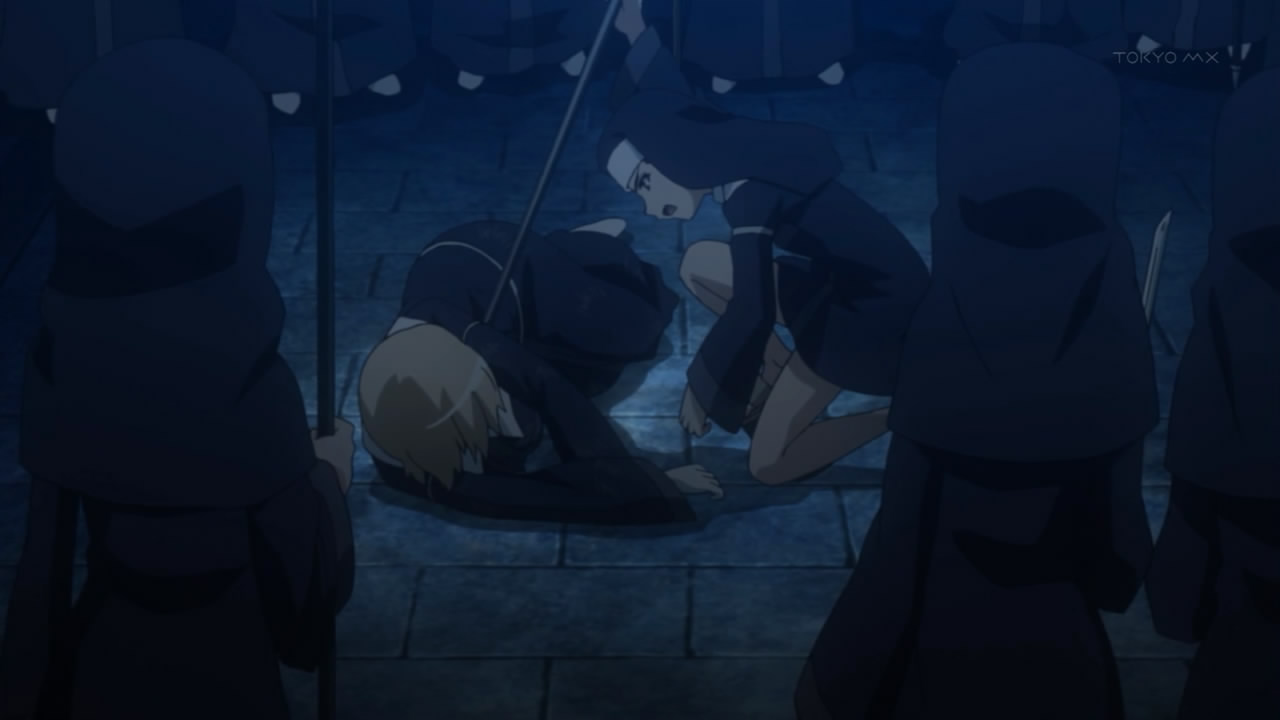
If you thought the Final Boss in the first game was amazing, then you haven't seen anything yet.A beautiful dynamic intro, fun setting with plenty of furniture to wail on him with, a very unique and interesting moveset, and to top it all off, a really cool Quick Time Event that'll catch you off-guard on your first playthrough (especially if you were used to the QTEs of the previous entries). Hell, his Leitmotif from the first game doesn't even return, either - only the standard battle theme plays during Yagami's final faceoff with him. Also counts as an Anti-Climax Boss considering how facing him again is your reward for completing the School Stories, including the Robotics Club and Made In Heaven stories (see That One Sidequest below). Whereas he was the most formidable and dangerous of the Keihin Four even when you fought him alone, here he's little more than a Flunky Boss who hardly even uses his guns and his AI is comparatively less smart than in the first game. Of the four, though, Koga gets it the worst.

Due to this game's removal of the Mortal Wounds system (and the addition of the Mortal Reversal and the Snake style), they're nowhere near as threatening, frequent, or annoying as they once were, now being as easily dealt with as any standard mook in the game. Although, if anything to go by both of their in-game bios in the Help section of the menus, it might be more of a case of Henpecked Husband than anything. By the sequel, this is mostly ignored in favor of him being a Butt-Monkey Dogged Nice Guy to Saori. Through Character Development in the first game, he goes from a rookie lawyer to someone who can handle an extremely important case on his own in the finale. Not even Best Score despite RGG Studio bringing their A-game for this game's soundtrack (which you can check out below in Awesome Music along with the rest of the franchise's soundtrack)!

Changes in government are hard because everyone has their idea of what is good for the country the old guard is too bound by constraints and maintaining the status quo while they actively roadblock and bully the new guard because they have no constraints and want change.Most especially with how the 9th console generation turned out at launch. Seems like RGG Studio also doesn't think too highly of scalpers, either. note Usually, most collector's editions cost about $129.99 USD, or roughly 15,000 yen, so Tsukumo likely got his copy for at least 45,000 yen (close to $400 USD). On a more humorous note, one can't help but feel Tsukumo's pain about having bought a limited edition copy of a game at three times its original price.If someone is in a position to intervene and prevent the situation from getting worse, then he or she should do so.


It also pulls no punches on how the belief of School Bullying Is Harmless is not true as the two characters who outright believed this at first had it proven utterly wrong in the most tragic ways possible and go on to become the main antagonists of the game. Anvilicious: The game frequently goes into how horrible bullying is and how anyone who witnesses it should do their part to prevent it.Amasawa gets some moments, too, what with her being an Ascended Fangirl of Film Noir that's working with an actual Hardboiled Detective.Higashi of all people has a particular moment in Chapter 6 after he saves Saori, namely his reaction to seeing her so dolled up.Particularly when he makes a big deal out of resellers (or rather, scalpers), which one can't help but resonate with given the circumstances of the 8th and 9th console generations. Though the game itself doesn't actually encourage violence on Seiryo High's students (and you can just ignore the ones you find around Ijincho by strolling past them on your skateboard), that hasn't really stopped the Internet from using them as punching bags. Acceptable Targets: High school students, of course.


 0 kommentar(er)
0 kommentar(er)
